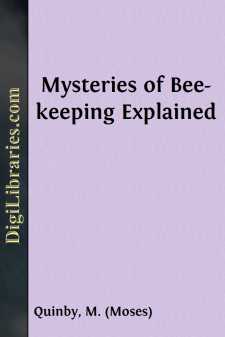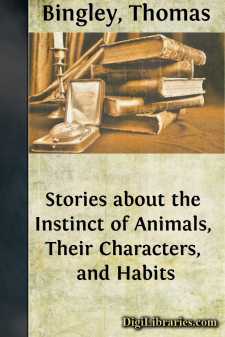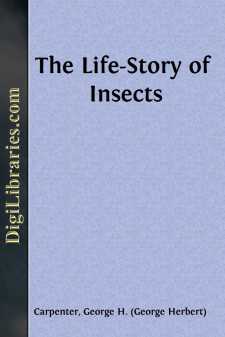Nature
- Animals 47
- Birds & Birdwatching 41
- Dinosaurs & Prehistoric Creatures 1
- Flowers 5
- General 32
- Horses 6
- Insects & Spiders
- Mammals 7
- Mushrooms 2
- Natural Disasters 6
- Natural Resources 3
- Reptiles & Amphibians 2
- Trees & Forests 10
Insects & Spiders Books
Sort by:
L. L. LANGSTROTH'S MOVABLE COMB HIVE.Patented October 5, 1862. Each comb in this hive is attached to a separate, movable frame, and in less than five minutes they may all be taken out, without cutting or injuring them, or at all enraging the bees. Weak stocks may be quickly strengthened by helping them to honey and maturing brood from stronger ones; queenless colonies may be rescued from certain...
more...
Our Pretty Dragon Flies Come, children; come with me. Come to a pond I know of. See how the water shines in the sun. Over there is an old log lying on the edge of the pond. It is covered with green moss, and a green frog is sitting on one end of it. Let us go and sit on the other end. Goop! he says, and—plump! he has jumped into the water. That is too bad, frog; we did not mean to disturb you. How...
more...
PREFACE. Before the reader decides that an apology is necessary for the introduction of another work on bees into the presence of those already before the public, it is hoped that he will have the patience to examine the contents of this. The writer of the following pages commenced beekeeping in 1828, without any knowledge of the business to assist him, save a few directions about hiving, smoking them...
more...
by:
Thomas Bingley
CHAPTER IV. Uncle Thomas introduces to the Notice of the Young Folks the Ettrick Shepherd's Stories about Sheep; and tells them some Interesting Stories about the Goat, and its Peculiarities. "I dare say, Boys, you have not forgotten the Ettrick Shepherd's wonderful stories about his dogs. Some of those which he relates about sheep are equally remarkable, and as he tells them in the same...
more...
PREFACE Having been frequently requested to explain the use of the bar-and-frame-hive, in the management of bees, I have been induced to print the following pamphlet, to point out the advantages this new hive possesses over the common ones. I have added extracts from various authorities to show the importance of transporting bees for a change of pasturage, and thus prolonging the honey harvest....
more...
Among the manifold operations of living creatures few have more strongly impressed the casual observer or more deeply interested the thoughtful student than the transformations of insects. The schoolboy watches the tiny green caterpillars hatched from eggs laid on a cabbage leaf by the common white butterfly, or maybe rears successfully a batch of silkworms through the changes and chances of their...
more...
A WORD TO THE CHILDREN AND THE WISE We hope that the children who read this book will like the boys and girls who are in it. They are real, and the good times they have are real, as any boy or girl who has lived out-of-doors will know. And the stories are true. Peter is not always good. But do you expect a child always to be good? We do not. Sometimes, too, the frolics turn into a scramble to catch a...
more...
by:
Jean-Henri Fabre
CHAPTER 1. THE HARMAS. This is what I wished for, hoc erat in votis: a bit of land, oh, not so very large, but fenced in, to avoid the drawbacks of a public way; an abandoned, barren, sun-scorched bit of land, favoured by thistles and by Wasps and Bees. Here, without fear of being troubled by the passers-by, I could consult the Ammophila and the Sphex (two species of Digger-or...
more...
by:
Francois Huber
ON THE IMPREGNATION OF THE QUEEN BEE. SIR, When I had the honour at Genthod of giving you an account of my principal experiments on bees, you desired me to transmit a written detail, that you might consider them with greater attention. I hasten, therefore, to extract the following observations from my journal.—As nothing can be more flattering to me than the interest you take in my researches, permit...
more...
PREFACE. This little volume mainly consists of a reprint of a series of essays which appeared in the "American Naturalist" (Vols. i-v, 1867-71). It is hoped that their perusal may lead to a better acquaintance with the habits and forms of our more common insects. The introduction was written expressly for this book, as well as Chapter XIII, "Hints on the Ancestry of Insects." The...
more...











